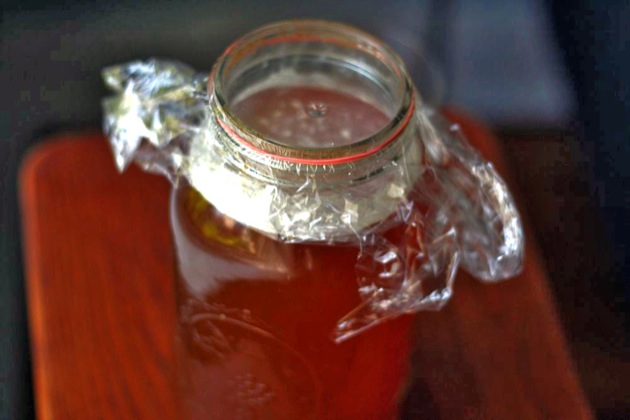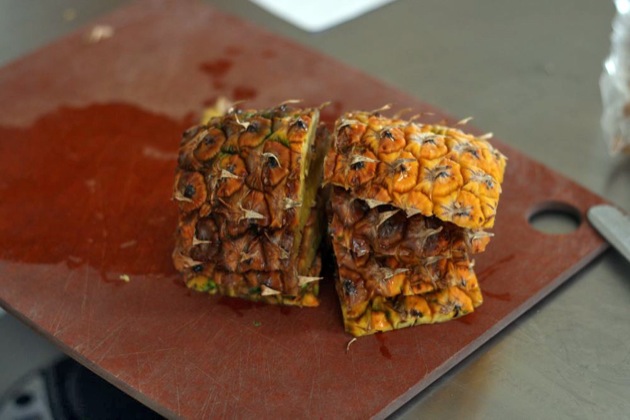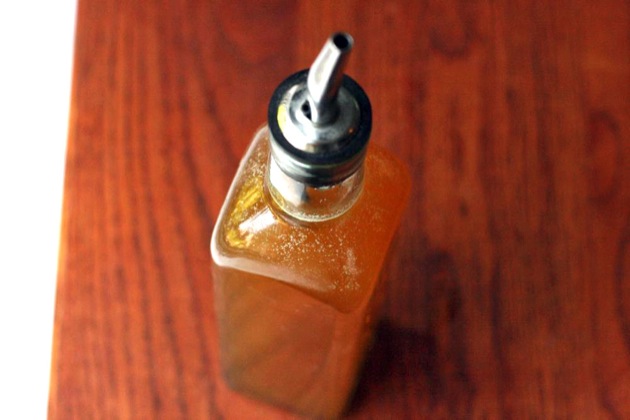How to Make Homemade Vinegar (It Couldn''t Be Easier)
A pineapple and a few weeks is all you need
When I think of Mexican cuisine, I think of balance. Mexicans love acidity in their cooking, and that's what makes it so appealing to eat. Though it's a function of living in a warm climate--the same reason Thai cuisine is also fond of citrus, it's a necessary form of preservation--the culinary benefit has outlasted the necessity.
When you have something rich and heavy in your taco--like, say, hunks of pork shoulder that have been slow-cooked in lard to become authentic carnitas --it is always accompanied by a bright, refreshing salsa to counterbalance it. That's something that's unfortunately lost in translation with so much Americanized Mexican food: the acidity. Americans aren't as fond of it. The typical Mexican restaurant, like the one in my college town of Greencastle, Indiana, serves rich, heavy food that sits in your stomach for hours. Cheese, beans, ground beef, all of it flavorful but nothing to set it all in relief. Your tongue just gets tired.
A well-made guacamole is a perfect example of this necessary balance. Avocados are wonderful things, creamy and rich, and when you add salt their flavor deepens and becomes round. But a guacamole really sings with a proper squeeze of lime juice. I've written before about the importance of acidity in seasoning , as important as salt itself, and Mexican cuisine intuitively understands this.
I'm taking a cuisine of Mexico class right now in culinary school, and one of the things chef continues to refer to is the frugality of Mexican cooking. The frank reality is that most of Mexican cooking was developed by people who didn't have a lot of money. They made use of everything, including the seeds from dried chiles (they can be charred until black and crumbled into salsas to add a complex smokey flavor). And one of the biggest surprises was that the acidity in their cooking doesn't always come from limes.
Limes and Mexican food seem inseparable, but the reality is that a lime tree can be a luxury, and most families didn't traditionally have more than one. Yet every dish needed that crucial acidity. So what did they do? They made fruit vinegar.
At the start of our class chef brought in a huge plastic bucket full of homemade pineapple vinegar, and we have used it for many of the dishes as a seasoning. The process of making it is simple: you simply combine the peels of a pineapple with water and brown sugar (actually, the tradition is to use a Mexican sugar called piloncillo , but brown sugar works just as welll) and allow it to become vinegar over the course of a couple weeks. Once you have the "mother," which is the good culture that has hence developed, it can be used to transform more water/sugar into yet more vinegar. It becomes an ever-replenishable well of acidity to be used without much worry of cost.
My own homemade back of vinegar has just finished, and I just bottled it up. Here's a documentation of the very simple process...which is basically to dump everything in a container and wait around.
Homemade Pineapple Vinegar
- Peels from 1 pineapple
- 6 ounces brown sugar
- 1 gallon distilled water
Note: I halved the recipe to fit in my smaller vessel
In a 1 gallon food-safe container, combine the peels, sugar, and water. Cover with plastic wrap or a lid and set in a cool, dark place. Allow to ferment for 2-4 weeks. The vinegar will get murky and brown, then slowly begin to clarify. Once you can see a white "skin" at the bottom, known as the "mother," the vinegar is ready. The "mother" can be used to create more vinegar as desired.
Food, Canning-Preserving, Acids in wine, Chef, Condiments, Cooking, Fermentation, food, Food and drink, Fruit, Fruit, Greencastle, Indiana, Lime, Mexican, Mexican, Mexican restaurant, Pineapple, Salsa, Seasoning, Structure, Vinegar, Vinegar




Comments:
Blog Comments powered by Disqus.